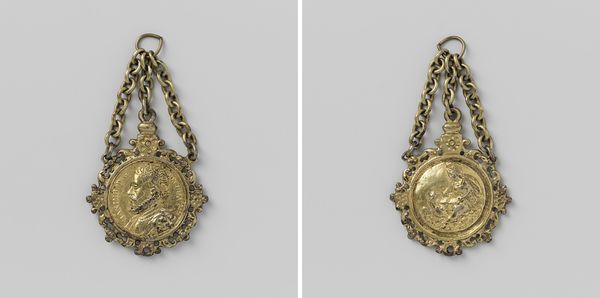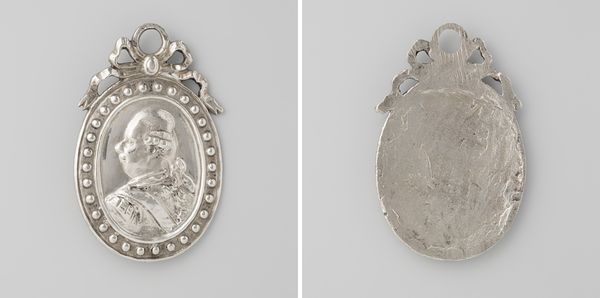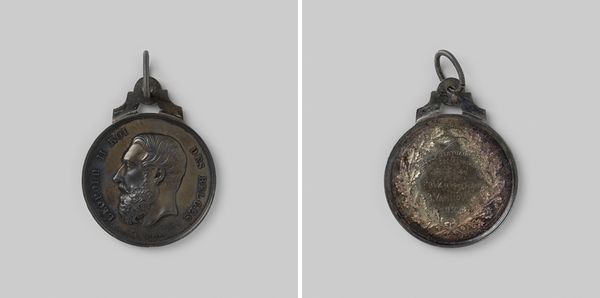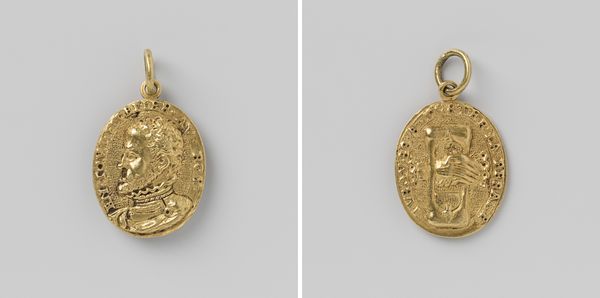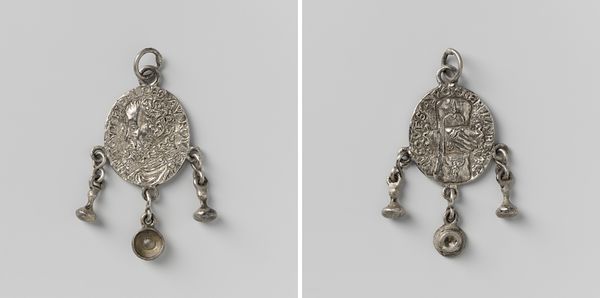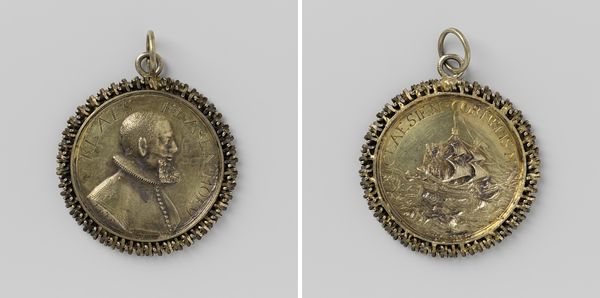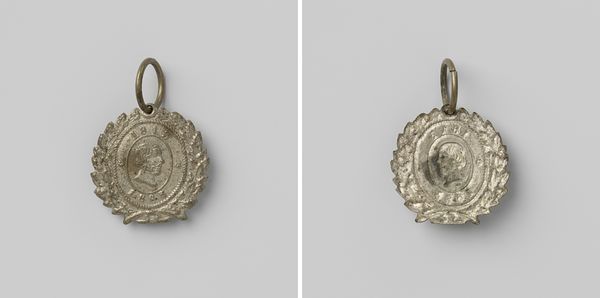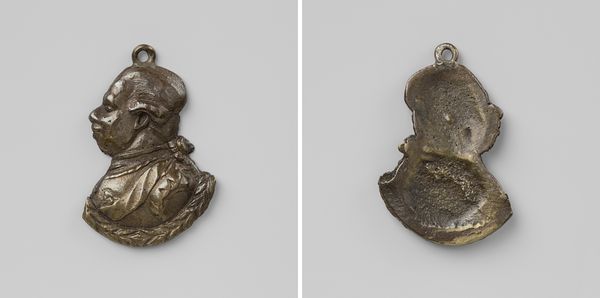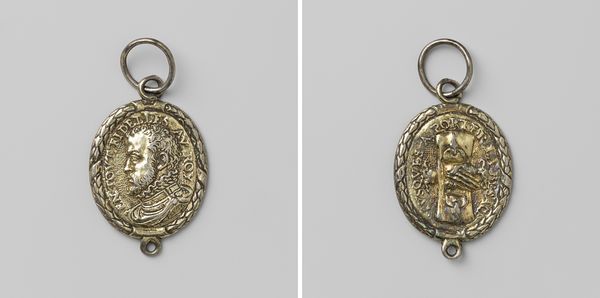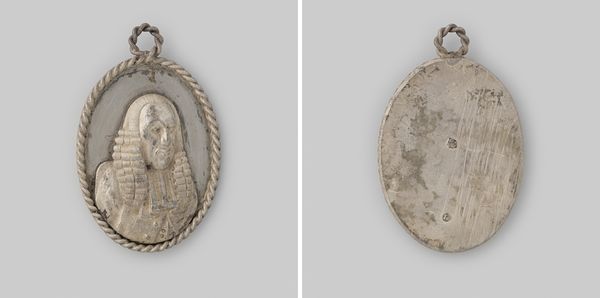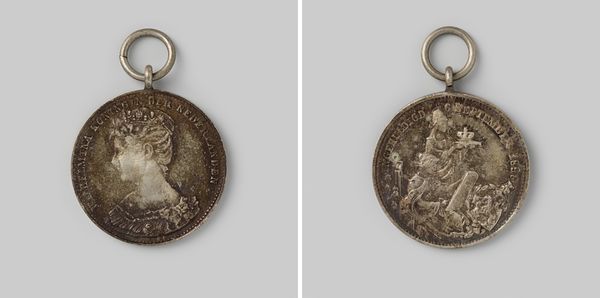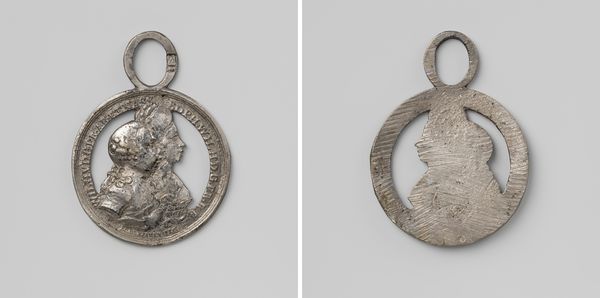
silver, metal
#
portrait
#
silver
#
baroque
#
metal
#
historical fashion
#
history-painting
Dimensions: length 4.4 cm, length 3.7 cm, width 2.6 cm, weight 12.31 gr
Copyright: Rijks Museum: Open Domain
Curator: Here we have a silver medal portraying Willem IV, Prince of Orange-Nassau. It dates back to the period between 1747 and 1751 and it is on display at the Rijksmuseum. Editor: My immediate reaction is one of formal constraint. The silvery tone combined with the precise craftsmanship create a palpable sense of duty and protocol. Curator: Indeed. Medals like this weren't merely decorative, they functioned as propaghandist tools and badges of office. The material itself, silver, implies wealth and status. The skill required to produce such an intricate piece would involve various artisans. This labour is intrinsically linked to the Prince's power and patronage. Editor: And note how carefully composed it is. Willem is presented in profile, a classical pose invoking notions of Roman emperors, surrounded by laurel wreaths, themselves symbols of victory and honour. It's not simply a portrait, but a careful construction of power through symbolic language. Curator: Precisely. It also speaks volumes about the relationship between art and power. Such medals served to disseminate a certain image, a specific narrative about the Prince's reign. The act of wearing it reinforces these ideas within a community. Editor: It is a dense collection of symbols. Even the crown above his head reinforces not only royal authority but a divinely ordained right to rule. What strikes me is how enduring these symbols are; we continue to understand them even centuries later. Curator: Absolutely. The medal exemplifies the social and economic conditions necessary for such an object to exist: specialized labour, access to precious metals, and a complex system of patronage. These material components are vital in interpreting its meaning. Editor: So, on the surface, it is a commemorative object; look deeper, and it reflects centuries of cultural, psychological, and historical context, all neatly packaged into a small silver object. Curator: It reveals to us the material foundations of power, reminding us that images and influence are rarely simple. Editor: And shows how lasting an impact a well-chosen emblem can have on collective memory.
Comments
No comments
Be the first to comment and join the conversation on the ultimate creative platform.
